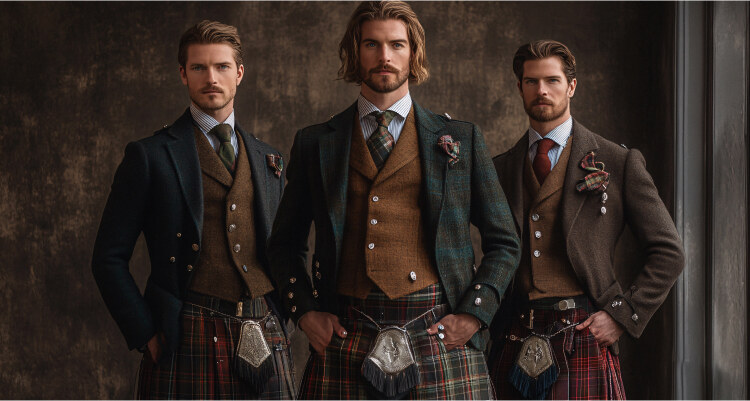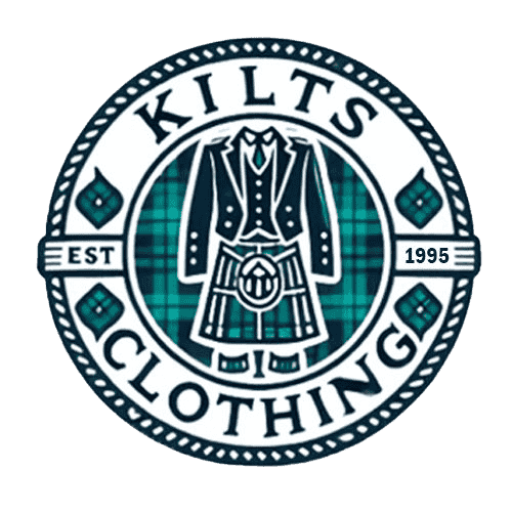Traditional vs. Utility Kilts: What’s the Difference and Which One Should You Buy?

Kilts are more than just garments—they are symbols of heritage, pride, and style. Originating in Scotland centuries ago, kilts have evolved from traditional Highland dress to a versatile fashion statement embraced worldwide. Today, buyers have two main options: traditional kilts and utility kilts. Both have their unique features and purposes, and understanding the differences can help you make the right choice for your wardrobe. This guide will explain what sets traditional and utility kilts apart and offer advice on which one may be best suited for your needs.
1. Understanding Kilts: A Quick History
The kilt, as we know it today, has its roots in Scottish culture, dating back to the 16th century. Originally designed for practicality in the rugged Scottish Highlands, the garment evolved into a symbol of clan identity and cultural pride. Traditional kilts are typically made from wool and feature tartan patterns representing different Scottish clans or regions.
In recent decades, modern fashion has embraced kilts in new ways. Utility kilts emerged as a contemporary adaptation designed for practicality and everyday use, diverging from the formal and symbolic nature of traditional kilts. These newer versions maintain the essence of the kilt’s design but with added features and modern materials to suit a wider range of lifestyles.
2. What is a Traditional Kilt?
Traditional kilts are instantly recognizable for their pleated design and distinctive tartan patterns. They are usually crafted from high-quality wool, which provides durability, warmth, and a classic look. Each tartan pattern often holds historical or familial significance, linking the wearer to a Scottish clan or heritage.
Key characteristics of traditional kilts include:
- Material: Primarily 100% wool tartan fabric
- Design: Pleated back, flat front apron, typically knee-length
- Patterns: Authentic tartans representing clans, regions, or families
- Occasions: Worn at formal events such as weddings, ceilidhs, Highland games, and official ceremonies
- Accessories: Often paired with sporrans (pouches), ghillie brogues (shoes), hose (knee socks), and jackets
Traditional kilts are crafted with attention to detail, often handmade or custom-fitted to the wearer. This craftsmanship ensures a timeless look that honors centuries of Scottish tradition.
3. What is a Utility Kilt?
Utility kilts are a modern reinvention designed for practicality, comfort, and casual wear. Unlike traditional kilts, utility kilts are made with materials like cotton, poly-cotton blends, denim, or even canvas, making them lighter and easier to maintain.
Features that define utility kilts:
- Material: Durable, lightweight fabrics such as cotton blends or denim
- Design: Includes functional elements like cargo pockets, belt loops, and adjustable waistbands
- Purpose: Designed for everyday use, work, outdoor activities, and festivals
- Variety: Available in solid colors, camouflage, and sometimes tartan prints, though less traditional
- Comfort: Made to be breathable and flexible for active wear
Utility kilts offer versatility and a casual aesthetic, appealing to those who want the freedom and style of a kilt without the formality and maintenance of traditional wool.
4. Key Differences Between Traditional and Utility Kilts
Fabric and Weight: Traditional kilts use heavy wool tartan fabric, providing warmth and a classic appearance. Utility kilts use lighter, often synthetic or cotton-based fabrics designed for comfort and ease of movement.
Functionality: Utility kilts are equipped with multiple pockets, reinforced stitching, and adjustable features, making them ideal for daily wear and practical use. Traditional kilts focus on aesthetic and cultural authenticity, lacking pockets and modern fasteners.
Use Cases: Traditional kilts are reserved for formal occasions or cultural events, while utility kilts are suited for casual, work, or festival settings.
Price and Maintenance: Traditional kilts tend to be more expensive and require special care, such as dry cleaning and careful storage. Utility kilts are generally more affordable and easier to clean, and often machine-washable.
Cultural Significance: Traditional kilts carry deep cultural and historical meaning, often tied to Scottish identity. Utility kilts are more fashion-forward and less connected to cultural symbolism.
5. Pros and Cons of Traditional Kilts
Pros:
- Rich heritage and authentic cultural symbolism
- Timeless, elegant appearance suitable for formal events
- Made from high-quality wool, offering warmth and durability
Cons:
- Heavier and less breathable, which can be uncomfortable in warm weather
- Higher maintenance and cleaning costs
- Limited functionality—no pockets or modern adjustments
6. Pros and Cons of Utility Kilts
Pros:
- Lightweight and comfortable for all-day wear
- Practical features like pockets for carrying essentials
- Affordable and easy to maintain
- Versatile for various casual and active occasions
Cons:
- Less formal and may not be accepted at traditional or ceremonial events
- Fewer traditional tartan options or clan affiliations
- Perceived as less authentic by purists
7. Which Kilt Should You Buy? Factors to Consider
Purpose: If you need a kilt for a wedding, formal ceremony, or Scottish event, a traditional kilt is the way to go. For casual wear, festivals, or work, a utility kilt offers better comfort and practicality.
Climate: Traditional kilts provide warmth, ideal for cooler temperatures, while utility kilts are breathable and better suited for warmer weather.
Personal Style: Are you looking for a garment with heritage and tradition, or something more modern and functional? Your style preferences will guide your choice.
Budget: Traditional kilts are typically more expensive due to materials and craftsmanship. Utility kilts offer a more budget-friendly option without sacrificing the iconic kilt silhouette.
Fit and Comfort: Both types require proper sizing for comfort and appearance. Utility kilts often have adjustable features, making fitting easier.
8. How to Care for Your Kilt
Traditional Kilts:
- Dry clean only to maintain fabric quality and color
- Store folded along pleats or hung properly to avoid wrinkles
- Avoid exposure to moths by using cedar blocks or mothballs
Utility Kilts:
- Usually machine-washable on gentle cycles
- Air dry to prevent shrinkage or fabric damage
- Spot clean as needed for stains
Proper care ensures your kilt remains in great condition and lasts for years to come.
9. Where to Buy Quality Kilts
When shopping for kilts, it’s essential to choose reputable retailers who specialize in authentic or high-quality utility kilts. Look for:
- Verified customer reviews
- Detailed sizing guides and customization options
- Clear descriptions of materials and construction
- Return policies for fit and satisfaction
Specialists often craft custom-made traditional kilts, whereas utility kilts can be found through outdoor apparel stores or online kilt retailers.
Conclusion
Kilts are timeless garments that can suit a variety of lifestyles, whether steeped in tradition or adapted for modern needs. Traditional kilts offer a connection to Scottish heritage, perfect for formal occasions and cultural events. Utility kilts provide a practical, comfortable, and stylish alternative for casual wear and everyday activities.
Choosing between the two depends on your style, intended use, and budget. Whichever you decide, wearing a kilt is a unique way to express individuality and celebrate a remarkable piece of fashion history.
FAQs
Can I wear a utility kilt to a formal event?
Generally, utility kilts are considered casual and may not be appropriate for formal or traditional Scottish ceremonies. Traditional kilts are preferred for these occasions.
Are utility kilts suitable for all body types?
Yes, utility kilts often have adjustable waistbands and more flexible sizing, making them suitable for a wider range of body types.
How do I know my kilt size?
Measure your waist where you plan to wear the kilt, typically around the hips. Consult the retailer’s sizing chart for accurate fit.
Can I customize a traditional kilt?
Yes, many retailers offer custom-made traditional kilts, allowing you to choose your tartan, pleating style, and accessories.
Are there cultural sensitivities to consider when wearing a utility kilt?
While utility kilts are popular worldwide, it’s respectful to be aware of traditional Scottish customs, especially at formal or cultural events, where a conventional kilt is more appropriate.

